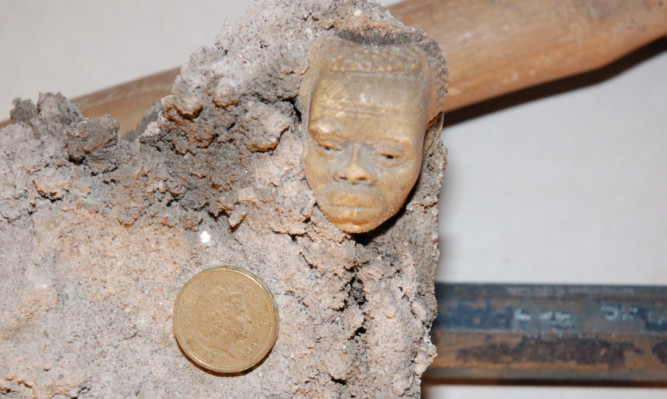An Angus family in the midst of a renovation were amazed to find a piece of maritime history mixed in with the walls of their home.
The Riddoch family from Carnoustie are in the middle of significant alterations to their century-old house and had planned to get rid of a former coal cellar on the exterior of the property before they found an odd item.
During the demolition they retrieved an ornate pipe mixed in with the concrete, and they are hoping Courier readers may be able to help smoke out the reason for it being there.
Early suggestions of the pipe’s provenance include the common sailor’s pastime scrimshaw, or a keepsake from a voyage to Africa.
Nige Riddoch was working with his hammer and chisel when the unexpected item fell from the wall.
“We knocked down a single wall which had a brick coal cellar or wash house, which would have originally been the outside wall for the house,” he said.
“We think the house was built about 100 years ago, and it’s a semi-detached type with a smaller house which may have been built later.
“It’s a very narrow street which looks like it was built for a horse and cart to go along, so it might be from those times. It’s a bit of a head-scratcher.”
During the 19th and early 20th centuries it was common practice for sailors to while away the hours off deck making scrimshaw art.
This term includes carving and engraving in bone or ivory.
This would usually be done by whalers from the bones and teeth of sperm whales, the baleen of other whales, and the tusks of walruses.
The making of scrimshaw began between 1745 and 1759 on the Pacific Ocean and survived until the ban on commercial whaling but goes on as a hobby.
Most of the original scrimshaw created by whalers is held by museums such as the Hull Maritime Museum in Kingston-upon-Hull and the Scott Polar Research Institute in Cambridge.
